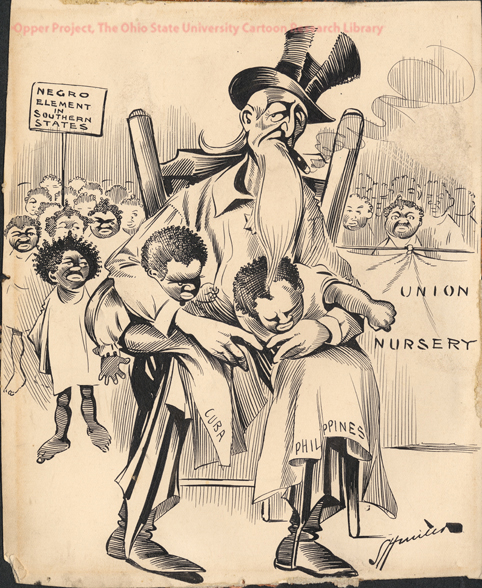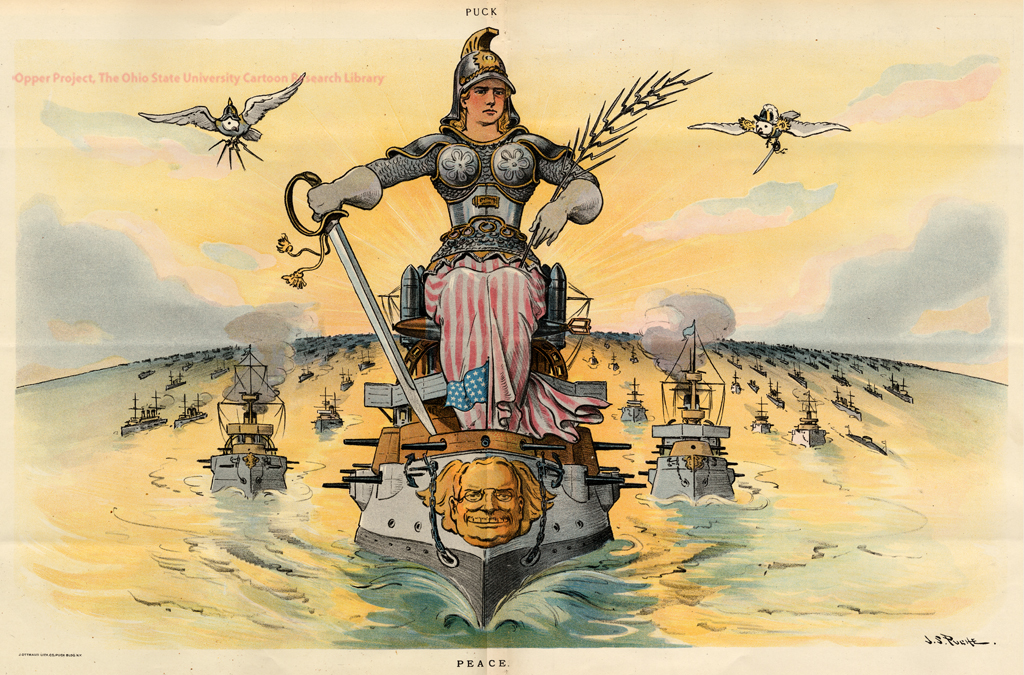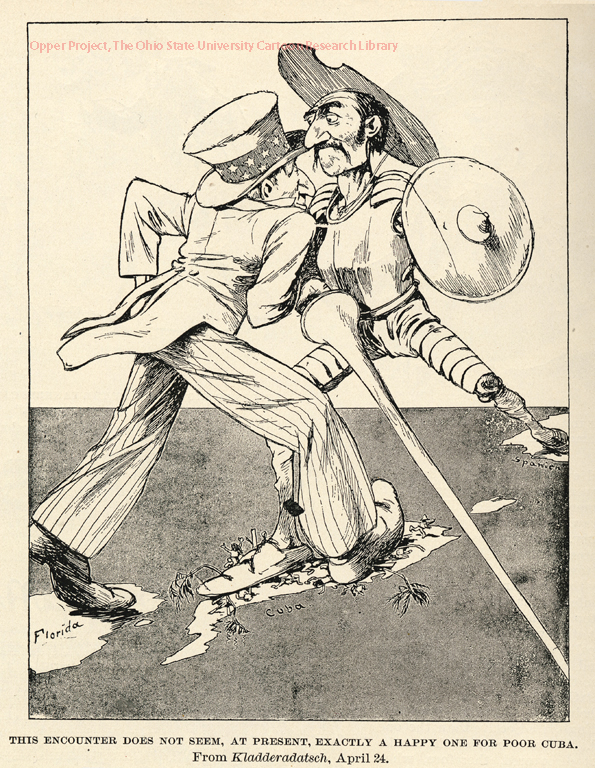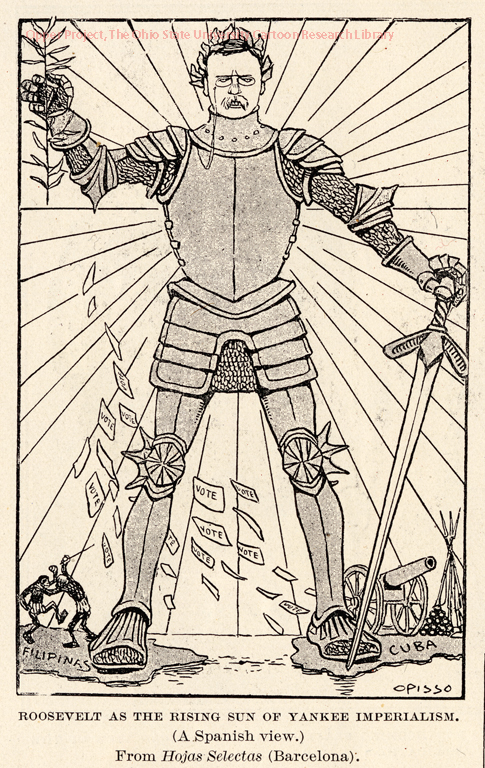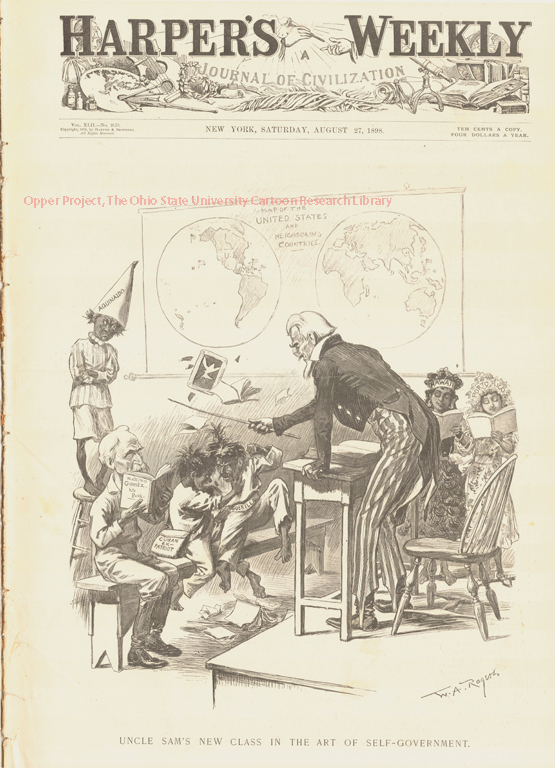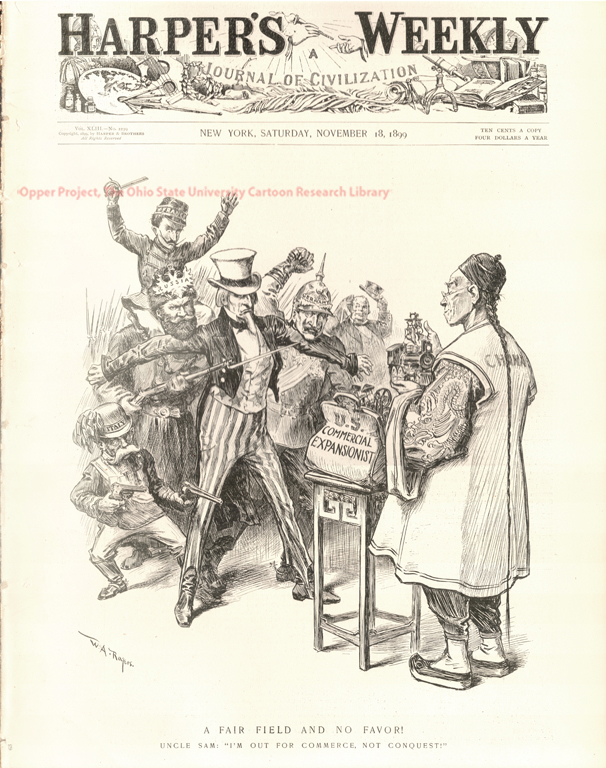American Imperialism
Lesson Plan
Ohio Content Standards:
Grade 9, History 5; Grade 10, History 5
Duration of Lesson:
One class / 50 minutes
Learning Objectives:
- Students will collaboratively analyze and compare editorial cartoons focusing on American imperialism drawn by both American and foreign cartoonists
- Students will determine if the editorial cartoons were drawn from an American or foreign perspective and interpret the meaning of the cartoons.
- Students will identify the cartoonists' intentions and evaluate the effectiveness of each cartoon's message.
- Students will synthesize and present their final interpretations.
Summary:
Students will be divided into groups and asked to analyze and evaluate editorial cartoons pertaining to late 19th and early 20th century American imperialism. Students are expected to determine the perspective of the artists. After group evaluation, students will present their finding to the entire class.
Materials:
- Editorial cartoons 1-6 and accompanying overhead transparencies (for teacher)
- Editorial cartoons 1-6 without publishing information (for students)
Pre-Assessment:
Teachers should use these questions to facilitate a pre-lesson discussion:
- What is imperialism?
- Give two examples of imperialism that we have studied.
- What are the historical consequences of imperialism? Consider the objectives of the conquerors and the expected responses of the conquered.
- What are the important aspects of editorial cartoons that we must look for?
Instructional Steps:
- Complete pre-assessment discussion questions.
- Divide class into six groups and distribute packet with cartoons 1-6
- Assign each group a specific cartoon. Each group should complete the "American Imperialism Worksheet" based upon their assigned cartoon.
- Individually each group will present their analysis of their cartoon while an overhead projection is displayed to the entire class.
- At the end of each presentation students will discuss the analysis and differing opinions of their classmates.
Post-Assessment:
Teachers should use the following questions to facilitate a post-lesson discussion:
- Based on today's research and activities how do the perspectives of American and foreign authors differ regarding American foreign policy in the late nineteenth and early twentieth centuries?
Extension Activities:
- The symbols, names and characters in cartoon number one are used to portray American Imperialism in the late 19th and early 20th centuries. How can these symbols, names and characters be changed in order to make the cartoon relevant to current American foreign policy.
- Have students look at cartoon number seven and discuss the following questions:
- Why did the United States engage in imperialism?
- How did the American government justify their imperialistic actions?
- How does this image portray both of these concepts?
*Please note: The image "Peace" is from Puck, March 29, 1905.
Cartoons:
Union Nursery
Peace
This Encounter Does Not Seem, At Present, Exactly A Happy One For Poor Cuba
Roosevelt As the Rising Sun of Yankee Imperialism
President Roosevelt’s Forthcoming Feast
Uncle Sam’s New Class in the Art of Self-Government
A Fair Field and No Favor! Uncle Sam: 'I'm Out For Commerce, Not Conquest.'

